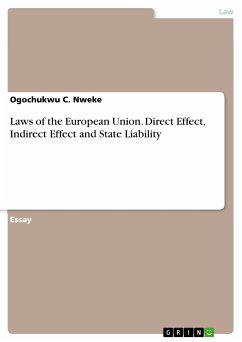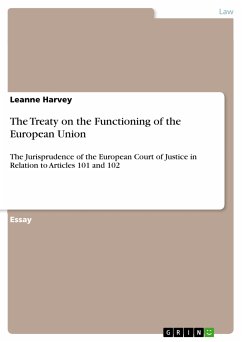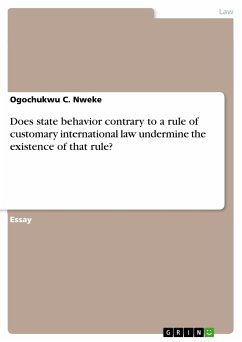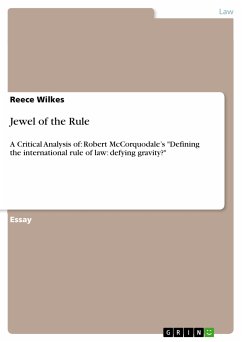Essay from the year 2020 in the subject Law - European and International Law, Intellectual Properties, , language: English, abstract: This document discusses how the Court of Justice of the European Union has over the years adopted and used the Direct effect, Indirect effect and State liability principles to make the EU Laws more effective, both in terms of interpretation and application, especially with regards to EU Directives. The Court of Justice of the European Union (CJEU) whose composition and functions were enunciated in Section 5 of the Treaty on the Functioning of the European Union (TFEU) 2008, was established in 1952, with the aim of interpreting the Laws of the European Union, making sure that the application of these laws are uniform and consistent in all EU countries. The CJEU also "settles legal disputes between national governments and EU institutions." The CJEU is divided into two courts. It gives rulings on cases brought before it and in doing so, it is required to give preliminary rulings in its capacity to interpret the laws (among other capacities) "to ensure EU law is properly applied, but courts in different countries might interpret it differently. If a national court is in doubt about the interpretation or validity of an EU law, it can ask the Court for clarification. The same mechanism can be used to determine whether a national law or practice is compatible with EU law."
Dieser Download kann aus rechtlichen Gründen nur mit Rechnungsadresse in A, B, BG, CY, CZ, D, DK, EW, E, FIN, F, GR, HR, H, IRL, I, LT, L, LR, M, NL, PL, P, R, S, SLO, SK ausgeliefert werden.









